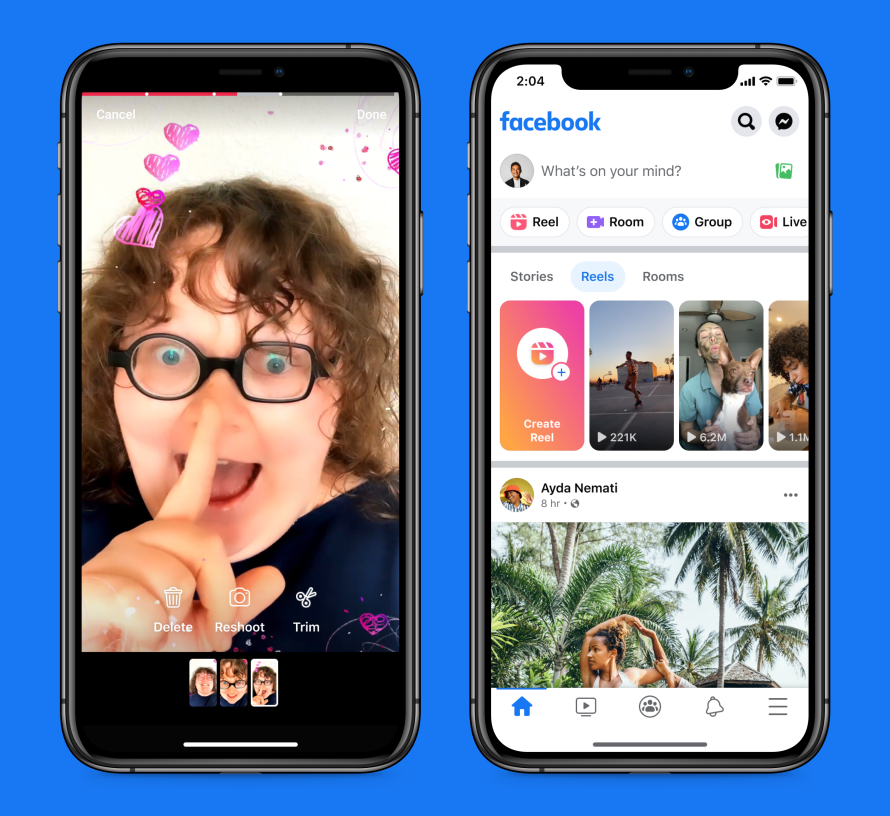Tech companies design their products in a way that takes advantage of our evolution-based brains, says design ethicist Tristan Harris.
In the last three decades, the role of technology in our lives has grown tremendously and benefitted us in ways that humans in the past could not have even imagined.
One of the many benefits of modern technology is that it can save us a lot of time (“can” being the key word here).
For example:
- We don’t have to spend hours driving to and from the mall just to buy a pair of jeans
- We don’t have to physically go to a restaurant to order take out
- Or go to a movie theater for entertainment
And so on. But this is just one side of the coin. The core of modern technology isn’t built to save you time, say experts. Instead, it’s to keep you hooked on tech-based products and services, increasing revenue for tech giants.
This post concerns that side of the coin. We’ll look at the tactics tech companies use to keep you hooked, as well as how you can break free from the control technology has on your life. So, let’s begin.
We Are a Product of Evolution
Everything we do today, every trait, behavior, and habit, is a product of millennia of evolution. The primary goal of humans was to survive and populate the planet. But humans were neither as strong nor as fast as some of the animals in nature.
So, to survive amid all the threats, humans had to adapt. And the things they did to survive are engraved into our DNA. Let me give you an example.
Dopamine is a hormone that can motivate you to achieve new feats and become the best version of yourself. Every time you achieve something new, you get a dopamine rush—an amazing feeling rewarding you for all the hard work you did to reach that goal.
Your brain seeks this rush. This means that if you aren’t actively pursuing something, your brain will push you to do something and move in that direction.
And it makes sense because, as a society, we praise achievers, we like them, we protect them—and we punish losers.
Also, this is not new. It’s been going on for millennia.
In ancient times, being liked by people meant that you would be safe and well-fed, and all your needs would be met. This is why it’s engraved in our DNA to pursue success.
And though today we aren’t being attacked or deprived of nutrition, we still have that primal desire. That’s why we seek “likes” on our images on the internet, make thousands of friends on social media sites (even though we don’t really know them), or get hooked on video games.
We do these things because they give us a sense of success, and therefore, a dopamine release.
Tech giants figured this out long ago. That’s why they design their products in a way that serves your evolutionary desires, keeping you hooked on their services.
Technology & Psychology
Statistics say that, on average, Americans check their phones 344 times a day. That’s once every four minutes. Another survey by common sense media says that kids today spend an average of 6 hours and 40 minutes glued to their screens every day.
It’s safe to say that people today are hooked on their gadgets. But that may not be entirely their fault.
Sources say that there are experienced psychologists and neurologists behind the design of digital products to ensure we spend more time on them.
Big tech companies also reportedly employ mental health experts to use something called persuasive technology. This is a new field of research in behavioral psychology, and it’s said to give algorithms the ability to change how people think and act.
In 2018, 50 psychologists sent a letter to the American Psychological Association highlighting how tech companies use “hidden manipulation techniques” to increase children’s use of social media and video games. In that letter, they asked the APA to take an ethical stand on behalf of the kids.
How Tech Companies Leverage Your Psychological Vulnerabilities
Here are some of the ways modern technology uses our psychological vulnerabilities.
The Illusion of Choice
Making free choices is a right that most of us in the western world defend fiercely. But the problem is, our brains are designed not to care what the exact choices are, as long as we get to choose.
This is one of the most popular techniques in child psychology: “Let them choose among the options that are acceptable to you.”
When given multiple options, you don’t bother asking:
- What are the options?
- Why am I not being given other options?
- Do I know the intentions of the person providing me the choice?
- Are the options available empowering my original need?
And this is what tech companies leverage to keep you hooked on their services.
Let’s take Yelp reviews, for example. We all use Yelp to find the best vendors to serve our needs. But, since Yelp takes away the exploration part, you can only choose among the options available on the site. And you’d possibly never discover what’s not on that list.
The more choices our gadgets give us, the more we become reliant on them to pick the best thing for us. For example:
- The front page of social media becomes a source for us to know what’s going on in the world
- The list of potential partners on a dating site becomes our only choice in building relationships.
By controlling the options we choose from, modern technology can reshape the choices we make, which may or may not align with your true goals.
The Slot Machine in Your Pocket?
Statistics say that an average user worldwide checks their phone more than 150 times a day. So, are you making 150 conscious choices to check your phone every day? Of course not.
In psychology, there’s something called intermittent variable rewards. If tech designers want to maximize your addictiveness to their product, all they need to do is to associate your action with a variable reward.
This is similar to how slot machines work in casinos. Once you pull the lever, you either win a prize or get nothing. And in hopes of winning a jackpot, you keep trying again and again.
When you pull your phone out of your pocket, you’re actually playing a slot machine, hoping that you’ve received an important notification.
As you scroll down on your social media feed, you’re playing a slot machine to see what interesting content comes next.
Similarly, when you tap on the applications that have the red bubble showing the number of notifications you got, you’re playing a slot machine to see what’s underneath.
This brings you back to your phone repeatedly, and once you’re there, there are different tactics that work to keep you on whatever app or internet service you just opened. See my post “Gadgets Are Addictive & Tech Companies Know” for more information.
FOMSI: Fear of Missing Something Important
You may have heard of the term FOMO or fear of missing out. It’s a mental condition that keeps you submerged in social media in fear that you’re being excluded from something exciting.
But did you know there’s also a concept called FOMSI, or fear of missing something important, that keeps you from staying off your gadgets in fear that you might miss something important?
This fear keeps us:
- Subscribed to a newsletter even if it hasn’t delivered anything valuable, just so we don’t miss future announcements
- Friended to people on social media even if we haven’t spoken with them in ages
- Swiping images on Tinder, even if we haven’t met anyone in a while
- Using social media, just so we don’t miss anything important, like a news story or an important event.
But if you just take a closer look at this fear, you’ll realize that this is just an illusion. Digital detox does an excellent job at making you realize this. More on that later.
The Intimate Need for Social Approval
Since humans are social animals, we’re susceptible to social approval. This means that being liked and appreciated by other people is among the highest human motivations. And as social media is our primary method of socializing today, these platforms are in control of social approval.
Imagine a friend tagging you in a picture. Do you think they made a conscious choice to tag you?
Maybe yes. But that may also not be the case.
This is because sites like Instagram, Facebook, and Snapchat can easily manipulate how often you get tagged in your friends’ uploads. They do this by suggesting your face for a tag and providing an easy one-click confirmation to complete the action. “Do you want to tag [your name with your profile picture] in this photo?” Click yes, and that’s it.
So, when your friends tag you, they might actually be responding to Facebook’s or Instagram’s suggestions and not making an independent choice.
Another example is changing your profile picture on social media sites.
Since profile pictures are the first thing people see when they visit your account, you’re conscious of what others think of your picture. And because social media sites know this, they rank your picture higher in the news feed. This way, you can keep coming back to the site every time you receive a notification for a like or a comment.
We all respond to social approval techniques on social media sites. But experts say that younger people, especially kids and teenagers, are most vulnerable to this tactic.
Infinite Feeds and Auto Play
In 2005, Prof. Brian Wansink did an experiment in which he demonstrated how people’s brains can be tricked into continuing to consume food even when they aren’t hungry anymore.
He gave his subjects a bowl of soup, which refilled automatically as they ate. He said that the subjects consumed 73% more calories than their typical calorie consumption with bottomless bowls.
This study proves that if you take a bounded and finite experience and turn it into a flow, you can trigger people to keep consuming even if they don’t need to consume anymore.
Tech companies leverage the same principle. This is why social media feeds auto-refill every time you hit the bottom, taking away any reason for you to leave.
The same goes for the video auto-play features on YouTube, Facebook, and Instagram.
Is Facebook Changing its Flagship App?
You may have heard of TikTok, a video platform that’s more addictive than anything else we’ve seen on the internet. People upload all kinds of videos in the 15-second to 1-minute range.
Seeing TikTok’s success in the market, Meta created an in-app feature called reels, which they integrated into Facebook and Instagram.

As per Meta’s recent announcement, the company is changing its flagship Facebook app into something of a video app.
Now when you open Facebook, it will greet you with the home tab that contains Reels videos. So, if you want to use the social features, like seeing posts from people in your friend list, you’ll have to switch to another tab called “feeds.”
Scott Rosenberg, managing editor of technology at Axios, put it like this: “Mark last week as the end of the social networking era, which began with the rise of Friendster in 2003, shaped two decades of internet growth, and now closes with Facebook’s rollout of a sweeping TikTok-like redesign.”
Since this change is here because of TikTok’s success, let’s look at why TikTok gained so much success in the first place.
TikTok is Addictive, and Here’s Why
According to a research study by Dr. Neil A. Bradbury, the average human attention span today is now eight seconds, which is two seconds less than that of a goldfish. And he mentioned that the increased consumption of information is one of the most important reasons for this decline.
Philipp Lorenz-Spreen of the Max Planck Institute for Human Development also said that “content is increasing in volume, which exhausts our attention, and our urge for ‘newness’ causes us to collectively switch between topics more regularly. Hence, these platforms have created this format that precisely fits this time frame. On Instagram reels, you can scroll through millions of 10-15 seconds long videos effortlessly.”
The human brain is driven by necessities (food, sex, sleep, etc.) and rewards. So, when we get these things, it gives us pleasure. And unsurprisingly, information is also one of the commodities that brings rewards.
When we accomplish something, our brain releases a chemical called dopamine. It’s a neurotransmitter that mediates pleasure in the brain.
This chemical creates a feedback loop pushing individuals to redo the actions that give them pleasure (this is also how people get addicted to alcohol and drugs).
In the case of TikTok, if you don’t like a certain video, it automatically scrolls to the next one, giving your brain an illusion of success and, with it, a surge of dopamine.
Because of the fast pace of changing content, we don’t get bored easily—so we have no problem watching such videos for hours.
In simple words, TikTok videos don’t exhaust your short attention span and constantly present you with new and exciting information. This keeps you hooked and is causing millions of people to be addicted to the platform.
2022: Amazon Alexa Can Now Speak in Your Dead Relative’s Voice
You may have experienced the mournful feeling of someone close to you passing away. You miss the time you spent with them, their presence in your life, and their voice in your ears.
You may also have said, “If only there was a way to bring them back, I’d give anything to make that happen.”
Well, in their 2022 re:MARS conference, Amazon announced a feature that will allow you to bring back part of your deceased loved ones in the form of Alexa.
You can play a small recording of their voice to your Alexa device, and using AI, Alexa will change its voice to their voice.
Check out the demo in the YouTube video below.
“While AI can’t eliminate that pain of loss, it can definitely make their memories last,” said Rohit Prasad, senior vice president and head scientist for Alexa, at Amazon’s re:MARS conference in Las Vegas.
Can It Be a Good Aid for The Bereft?
Keeping photographs of deceased loved ones is a common practice. But experts say it can be both good and bad, depending on the individual.
Some are strong enough to look at the picture and remember the happy times spent with the deceased. But for some, such pictures can take them back to their most vulnerable point.
In 1969, Elisabeth Kübler-Ross described five common stages of grief:
- Denial
- Anger
- Bargaining
- Depression
- Acceptance
And until the individual has reached the acceptance phase, any reminder of the deceased, even a single photograph, can make going through these stages much harder. And if the reminder comes in the form of voice, it can undoubtedly intensify the effects.
But obviously, this isn’t true for everyone because grief is a very subjective experience. And we can’t say for sure how something will affect someone.
Other Problems
Grief intensification isn’t the only problem with using a real person’s voice on digital assistants.
In June 2022, Microsoft announced that they’re restricting the use of software that mimics a person’s voice. They said, “This feature could be weaponized by those trying to impersonate speakers as an act of deception.”
Subbarao Kambhampati, a professor of computer science at Arizona State University, also said that “Alexa feature has the potential to aid a bereft family member, though it has to be weighed against a variety of moral questions the technology presents.”
“For people in grieving, this might actually help in the same way we look back and watch videos of the departed. But it comes with serious ethical issues, like is it OK to do this without the deceased person’s consent?”
People’s Reaction
Here’s how the public reacted immediately after Amazon unveiled the feature.
One Twitter user called the feature creepy.

Another user called it a morbid demo.

And finally, one user replied with a plain ‘no.’

These are just a few examples. Many netizens have expressed extreme displeasure upon seeing this feature, and we’ve yet to see the public’s reaction when the feature actually goes live.
What Can You Do?
So, it’s apparent that companies that provide modern technology have significant control over your tech use. But that doesn’t mean there’s nothing you can do about it.
You just need to take a healthier approach when it comes to using modern technology. Here are some of the ways you can do that.
You’re In Charge of Your Tech and Not Vice Versa
It’s no secret that tech companies use behavioral psychology, persuasive design, and triggers to trick you into spending a lot of time with your gadgets. But, if you just take a step back and observe this whole situation, you’ll find that it’s you who is ultimately in control.
The tricks and tactics only work when you choose to use your gadget for a massive chunk of the day. If you simply switch it off, all these effects can stop.
But I understand that this isn’t feasible for everyone. So, I recommend setting up a screen time limit and following it with extremely few exceptions.
We often talk about limiting screen time in children. But it turns out it’s equally important and beneficial for adults. Check out my post “Screen Time Limits for Adults” for more information.
Focus on The Real World
Because of how advanced technology has become, the line between the virtual and the real world has blurred significantly. And now, with the introduction of the Metaverse, this line will become virtually non-existent with time.
But, as I already mentioned, you’re the one who is in ultimate control of your tech. So put your phone down and spend some time in the real world when you can.
You can meet your friends, go hiking, read a book, start an offline hobby like gardening, or start taking evening walks. There are a hundred things that you can do instead of mindlessly scrolling on your phone.
Accept The Fact That You Can’t Be Online 24/7
Regardless of whether you’re suffering from FOMO or FOMSI, this acceptance will tremendously ease your condition. You have to realize that you’re an individual with a life, responsibilities, and needs.
So, you can’t possibly be online 24/7. There will be things that you will miss, and that’s not the end of the world.
Read my post on “Fear of Missing Out” for more information.
Digital Detox
Digital detox is a concept that’s slowly taking over the world. This is one of the best things you can do to alleviate the effects of technology on your physical and mental health. And the only rule here is to stay away from your tech.
One thing that makes digital detox absolutely brilliant is that it doesn’t force you to be offline 24/7. You can set up your own digital detox sessions at your convenience.
I have written a separate in-depth post on how to start practicing digital detox. So, give it a shot.
Final Thoughts
My goal here is not to hate on modern technology or convince you to quit the convenience of tech and live as humans lived 200 years ago. Technology made us the advanced humans we are today, and it will continue to serve the human race in the future.
What I want is for us all to build a healthier relationship with it. Do this, and you won’t miss technology’s benefits but also won’t be subjected to the adverse effects of using it.
You can learn more about building a healthier relationship with technology by visiting “The Healthier Tech Podcast,” where experts from different industries discuss how to use technology in a safer, healthier way. So, give it a listen.












